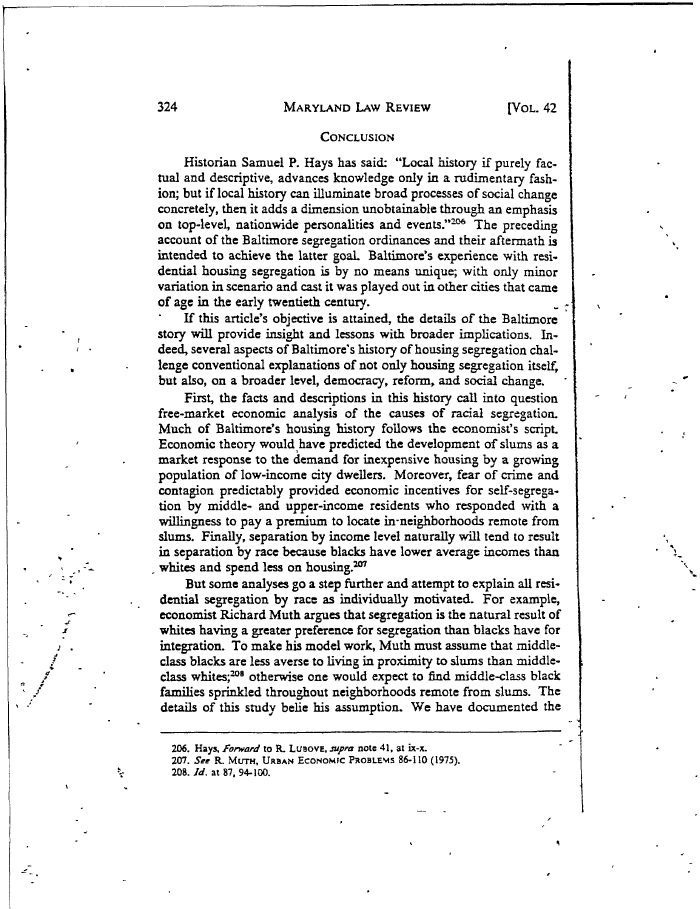 |
||||
|
Garrett Power, Apartheid Baltimore Style: The Residential Segregation Ordinances of 1910-1913, Maryland Law Review, 42 (1983) , Image No: 37 Enlarge and print image (63K) << PREVIOUS NEXT >> |
 |
||||
|
Garrett Power, Apartheid Baltimore Style: The Residential Segregation Ordinances of 1910-1913, Maryland Law Review, 42 (1983) , Image No: 37 Enlarge and print image (63K) << PREVIOUS NEXT >> |
| 324 MARYLAND LAW REVIEW CONCLUSION [VOL. 42 Historian Samuel P. Hays has said: "Local history if purely fac- tual and descriptive, advances knowledge only in a rudimentary fash- ion; but if local history can illuminate broad processes of social change concretely, then it adds a dimension unobtainable through an emphasis on top-level, nationwide personalities and events.206 The preceding account of the Baltimore segregation ordinances and their aftermath is intended to achieve the latter goal. Baltimore's experience with resi- dential housing segregation is by no means unique; with only minor variation in scenario and cast it was played out in other cities that came of age in the early twentieth century. If this article's objective is attained, the details of the Baltimore story will provide insight and lessons with broader implications. In- deed, several aspects of Baltimore's history of housing segregation chal- lenge conventional explanations of not only housing segregation itself, but also, on a broader level, democracy, reform,, and social change. First, the facts and descriptions in this history call into question free-market economic analysis of the causes of racial segregation. Much of Baltimore's housing history follows the economist's script Economic theory would have predicted the development of slums as a market response to the demand for inexpensive housing by a growing population of low-income city dwellers. Moreover, fear of crime and contagion predictably provided economic incentives for self-segrega- tion by middle- and upper-income residents who responded with a willingness to pay a premium to locate in-neighborhoods remote from slums. Finally, separation by income level naturally will tend to result in separation by race because blacks have lower average incomes than whites and spend less on housing.207 But some analyses go a step further and attempt to explain all resi- dential segregation by race as individually motivated. For example, economist Richard Muth argues that segregation is the natural result of whites having a greater preference for segregation than blacks have for integration. To make his model work, Muth must assume that middle- class blacks are less averse to living in proximity to slums than middle- class whites;208 otherwise one would expect to find middle-class black families sprinkled throughout neighborhoods remote from slums. The details of this study belie his assumption. We have documented the 206. Hays, Forward to R. LUBOVE, supra note 41, at ix-x. 207. See R. MUTH, URBAN ECONOMIC PROBLEMS 86-110 (1975). 208. Id. at 87, 94-100. |